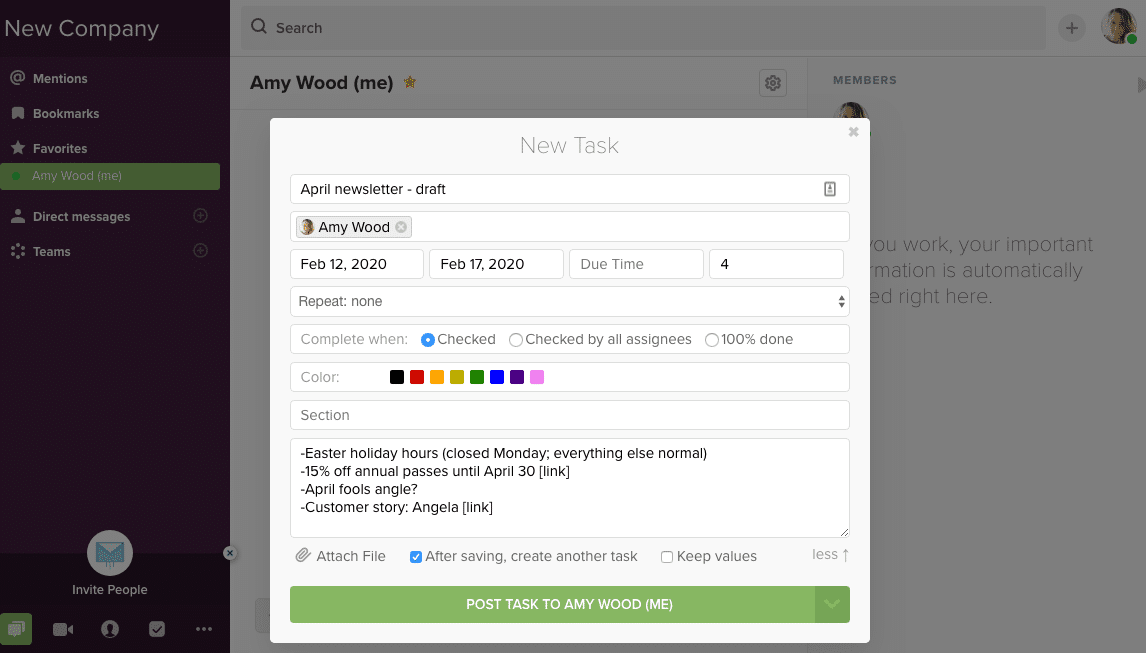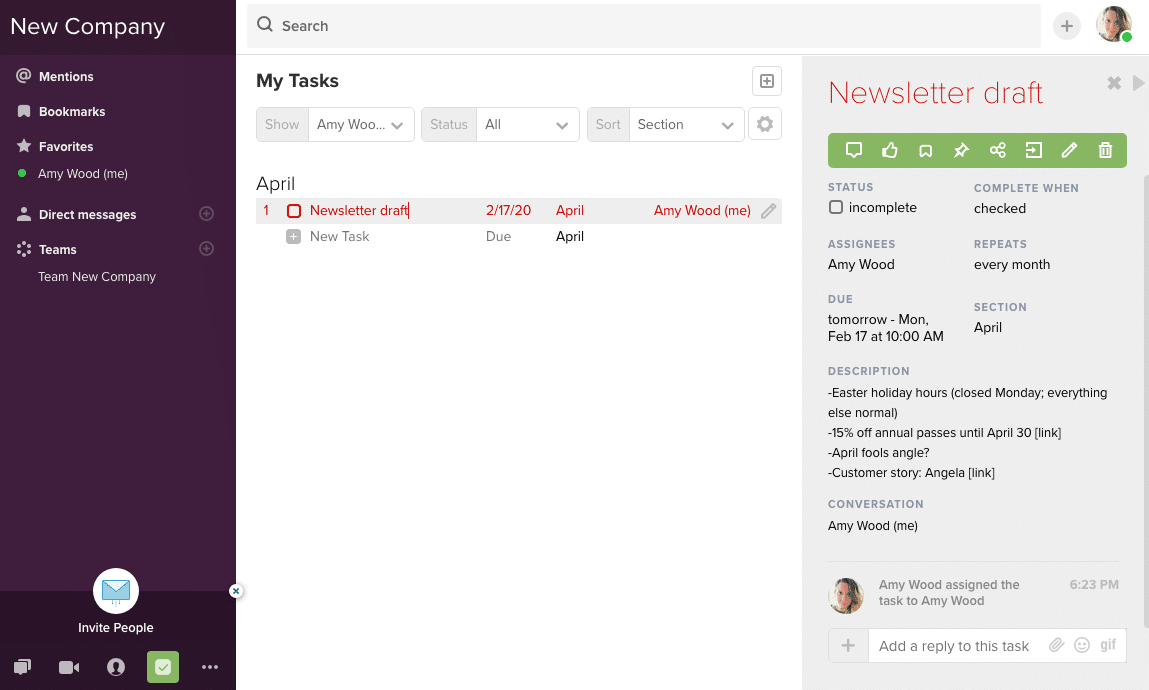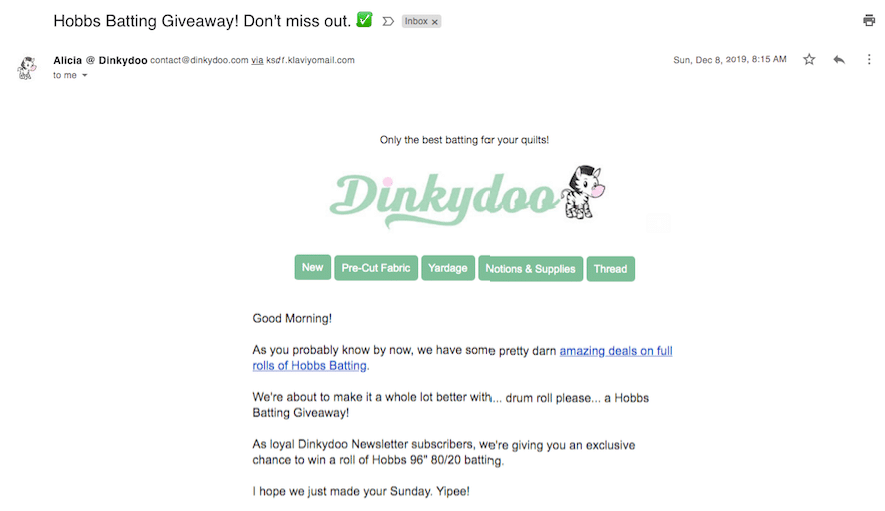So you’ve decided to send out a newsletter and want to make sure you have all your ducks in a row before you make it official. Or maybe you’re considering sending one out in the near future and want to educate yourself on best practices. Perhaps you already have one—you’re just looking to make the process more efficient. Whatever the case, this post is for you, so keep reading.
Email newsletters are a fun and manageable way to keep in touch with customers and prospects and let them know about upcoming events, promotions, and new content. But what may seem like an exciting task at the beginning can quickly become tedious if you don’t have a plan in place. When that happens, it might feel easier to skip an issue or—worse yet—send something subpar out to your audience.
A newsletter calendar can help take the stress out of planning for future newsletters, streamline production, and give you—and your team, if you’ve got one—a clear look at what’s coming down the line.
In this post, we’ll look at:
- What a newsletter calendar is (and what it should contain)
- The benefits of having a newsletter
- The 3 best free tools for creating your newsletter calendar
- How often you should send out your newsletter
- The key elements of a good customer newsletter
🔍 Are you thinking about purchasing a new communication tool and unsure how to get started? Wondering whether you need a virtual call center, business phone service or CCaaS? Here’s a checklist to help you pick the right one for your business.
What is a newsletter calendar?
Surely you get a few newsletters sent to your email on a weekly, biweekly, or monthly basis. You might even come to look forward to one or two. On the surface, these are just really well-crafted—often well-designed—emails that arrive in your inbox regularly without fail, but behind the scenes they’re the result of preparation, and probably (you guessed it) a newsletter calendar.
Much like a content calendar (or a social media calendar, marketing calendar, event calendar, etc.) a newsletter calendar is a tool for planning upcoming issues of your newsletter.
At its most basic, your newsletter calendar should contain the following:
- Go-live dates (when you actually send the newsletter)
- Draft dates (because you should always have at least one person proofread your newsletter)
That said, you’d be well served to include other important information in your calendar like:
- Holidays, especially those that affect your business hours
- Seasonal promotions
- Events, whether in-store or online
- Submission cut-off dates (if you source some of your content from employees—they need to know when to have it submitted by)
- Blog post publish dates
Having all of these nuggets in one place will not only keep you on track, but also provide you with an abundance of content to pull from when you actually create your newsletter.
The benefits of having a newsletter calendar
Beyond keeping you organized, maintaining a detailed newsletter calendar is useful because you can:
Plan ahead
Planning your newsletter well in advance means you’re not scrambling to pull something together at the last minute. Not only that, you can make sure you don’t forget to include something important—like how your brick and mortar location will be closed on Thanksgiving. (“But don’t worry, our online shop is available 24/7!”)
Stay accountable
Saying you’re going to send out a monthly newsletter is a nice sentiment—but it’s a promise you might not be able to keep if something more pressing comes along. Maintaining a detailed calendar will help you keep your promise—to yourself and your audience.
Stay top of mind
The Radicati Group, a tech market research firm, forecasted the number of emails sent and received worldwide will grow to 347 billion per day by the end of 2023. Yes, you read that right—347 billion per day. There’s a lot to unpack there, but what that means to you is that you can’t expect people to always be thinking about you. Sending out a regular newsletter packed with useful and engaging information will help to remind your customers and prospects you exist.
Help others help you
If you don’t have the time or the desire to actually build out the newsletter yourself, keeping up a detailed newsletter calendar allows you to pass its creation onto someone else. All they have to do then is take a peek at what’s coming up, slot in the planned content, and send it to you for approval before it goes live. Delegation… it’s a beautiful thing.
Best free tools for newsletter calendars
We get it—the last thing you want to do is pay for a specialized tool just for creating a newsletter calendar. Lucky for you, there are several free tools out there that’ll do the trick—and do it well.
Trello
This intuitive project management tool allows you to create customized boards to plan and track any number of projects, including your newsletter calendar.
Start with a blank board or choose a template (the Blog Content Schedule template seen below would be great for newsletter planning with a few tweaks).

Simply click on the “Calendar” button in the top left-hand corner, and you’ll see a month-by-month view of all your various important dates.

Best of all, this tool is completely free—although, paid plans are available if you’re looking for additional functionality.

Use the color-coding to highlight production dates or events, and keep a running list of content to include in the “Content Repository” tab.
Now you could use Excel for this task, but the benefit of Google Sheets is it’s synced with the cloud, so you and anyone else who may need to view or edit the calendar can access and update it in real time.
Something you’re already using
It’s possible that a tool you’re already using could double as a newsletter calendar. Not only does this save you money, it also saves you the hassle of learning the ins and outs of a new tool.
For example, if you’re already using RingCentral RingEX, then you probably know you can add tasks directly within the app. In fact, you can set up monthly recurring tasks (like creating a newsletter draft!), tag everyone who needs to be involved, add a due date, and include all the details right in the task description.
Here’s what it looks like while you’re adding the task:

And what it looks in the ‘Tasks’ view once it’s posted:

A note on newsletter frequency
How often to send out your newsletter will vary from business to business. There’s no wrong frequency, so long as the content you’re sending out is relevant, timely, and packaged up in an easily digestible format (more on what a “good” newsletter looks like later).
Also consider what’s a realistic frequency for you to keep up. You probably have a lot of stuff on your plate. As much as you’d like to send out a weekly newsletter, it just might not be feasible. Rather than burning yourself out by taking on too much, consider sending out a monthly or even bi-monthly newsletter, and scale up if you have the time or are able to offload the task to someone else.
What makes a good customer newsletter?
Now that you’ve mastered the art of newsletter planning, remember these top three tips:
1. Be captivating
Carefully consider the subject line and—if you use one—the headline of your newsletter. You only have a split second to catch your customer’s attention in their inbox, so make it count.

This subject line from a locally owned fabric store is anything but subtle—which is a good thing when it comes to email.
2. Be relevant
Like any type of marketing, the more relevant you are, the more your message will resonate with your audience.
So, for example, if your business has multiple locations that span a great distance, rather than send out one bulk newsletter, consider creating regional newsletters and segmenting your recipients accordingly. (To segment like this requires a bit of work though. For one, you have to know where your subscribers are from—some companies ask this right in the newsletter sign-up step.)
3. Be concise (or at the very least, clear)
Some newsletters are long—like tire-your-finger-out-while-you-scroll long. This isn’t necessarily a bad thing, but you have to consider your audience.
For example, did your email list opt-in to your newsletter because you offer a 15% off discount for subscribers, or did they opt-in because they genuinely want to hear from you?
If it’s the former, don’t waste their time with a novel of a newsletter. If it’s the latter, you can be a bit more generous with your word count. But don’t take that as license to drone on—get to the point and give your audience the option to learn more if they want via a link or button.
Take command of customer outreach with your very own newsletter calendar
The news is called the news because it’s all about what’s new. And just like the news, your newsletter needs to be current, captivating, relevant, informative, and well-crafted.
The easiest way to ensure this happens is by maintaining a detailed newsletter calendar. In that sense, it’s like you’re the editor in chief of your own newspaper, and—like all editors iGoogle Sheets
The world is made up of two types of people: those who love spreadsheets and those who loathe them. If you’re part of the former, consider using Google Sheets to plan your newsletter.
Happy planning!
Originally published Feb 18, 2020, updated Sep 26, 2024





